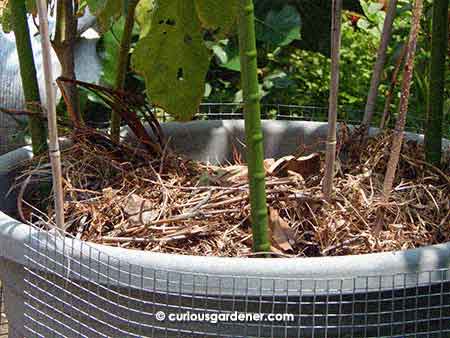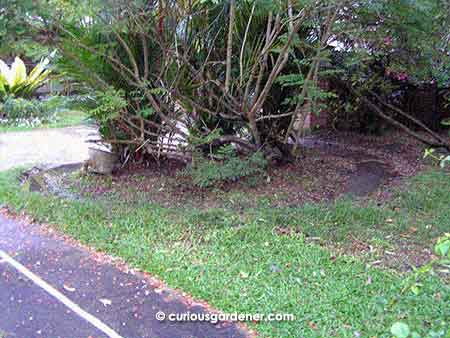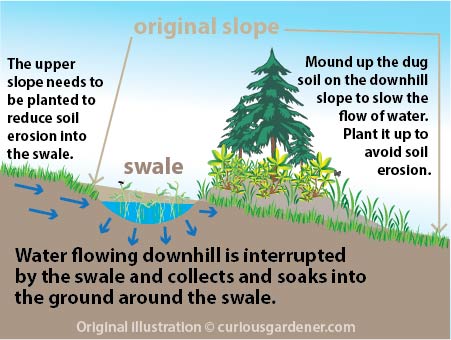
Adding a layer of mulch around plants helps keep moisture in the soil from evaporating too fast. If the mulch is organic, it will also become food for the plants when it decomposes. Win-win.
It’s been unseasonably hot in Singapore over the last several weeks, and I’m concerned, because the hotter months – traditionally, anyway – are yet to come. As you know (if you’re a regular here), I’ve been reading up about permaculture. There are lots of things I have yet to share about that, but the thing that I’m thinking about today is how to keep my plants, if possible, naturally watered in our hot climate.
In permaculture, there are several ways to get moisture to plants. One is heavy mulching. I’ve been experimenting with that ever since we discovered the volunteer red spinach plant that sprang up and grew quite well without our knowledge in leaf litter last year. Finding good mulch is the issue. I’ve taken pruned bamboo branches from my neighbour because I read that the leaves contain silica, which is one of the things that plants need. Using grass cuttings means that you’ll probably get grass seeds in that mulch, so I usually compost those unless I’m desperate for mulch material. Heliconia, fruit tree and curry leaves, which we have quite a bit of, aren’t suitable because they’re pretty hard and don’t decompose fast. My current favourite are the leaves from our belimbing tree which are somewhat soft and spongy when they dry up, which is good for soaking up and retaining water. Mulberry plants are also pretty good for chopping and dropping, if you use the newer parts of the stems.
Another permaculture method that intrigues me is the use of swales.
A swale is generally a low tract of land that is usually moist or marshy. I guess you can consider it a ditch in the landscape that, since it’s the lowest point of land, has the most moisture – because water collects at the lowest point of land. Permaculture practitioners work with the landscape to create swales that slow the drainage of water from the land. Instead of digging a trench to drain away water, a swale usually is angled to delay the flow of water and encourage it to meander across the land, thus giving the water more time to soak into the ground.
We have in our garden an inadvertent swale around a row of palm trees. It wasn’t made by us, but by one of our dogs that has a habit of running around this row of trees when excited. Yes, really. This little trench has been created over the course of a few years and is impressively deep at over a foot or so. The interesting thing about it is that when it rains heavily, a “moat” forms around the trees, and it takes time for the water to drain off because the trench is so well trampled.

The dog-made swale flooded after some heavy rain. Water runs off the driveway into the trench, and collects until it finally soaks into the ground. Since the soil is somewhat compacted, it takes a while to drain away.
I’ve heard about people who practice permaculture who have adopted this practice to harvest rainwater. There are places where people have to get a permit to dig a well or make a dam, and to avoid red tape, they have contoured their land with swales – or in some cases, simple holes – to collect and hold the rainwater near their crops when it rains, which gives the water time to seep into the ground where it’s needed. Isn’t that smart?
Here in Singapore, we have a ready supply of water, but I thought it might be an interesting thing to experiment with some “land contouring”, particularly with the hottest, driest months coming up. I recall my gardening buddy Novice Gardener talking about her young nephew digging little trenches and pouring water in them, but you know, there’s something in that…
I’ve already noted that water, when it rains, tends to drain from the front to the back of the garden, so maybe I’ll experiment a little. What harm could it do?
© 2015 curiousgardener.com All rights reserved.

